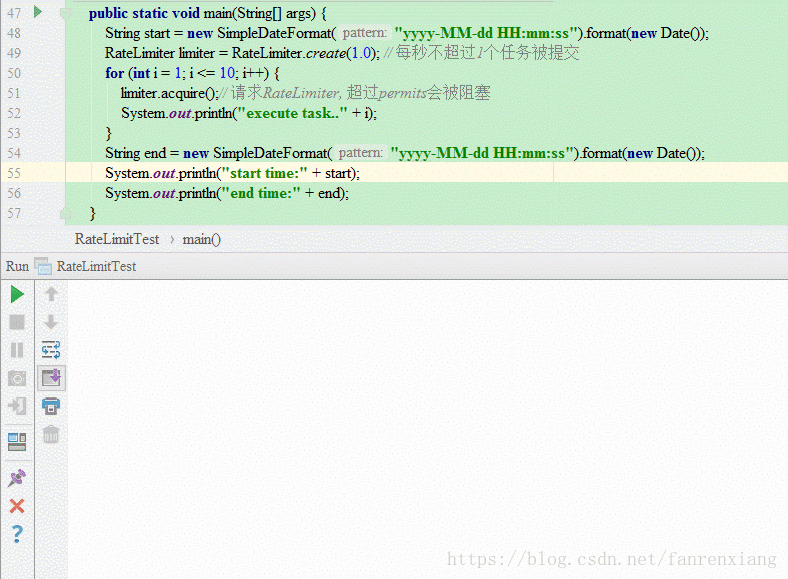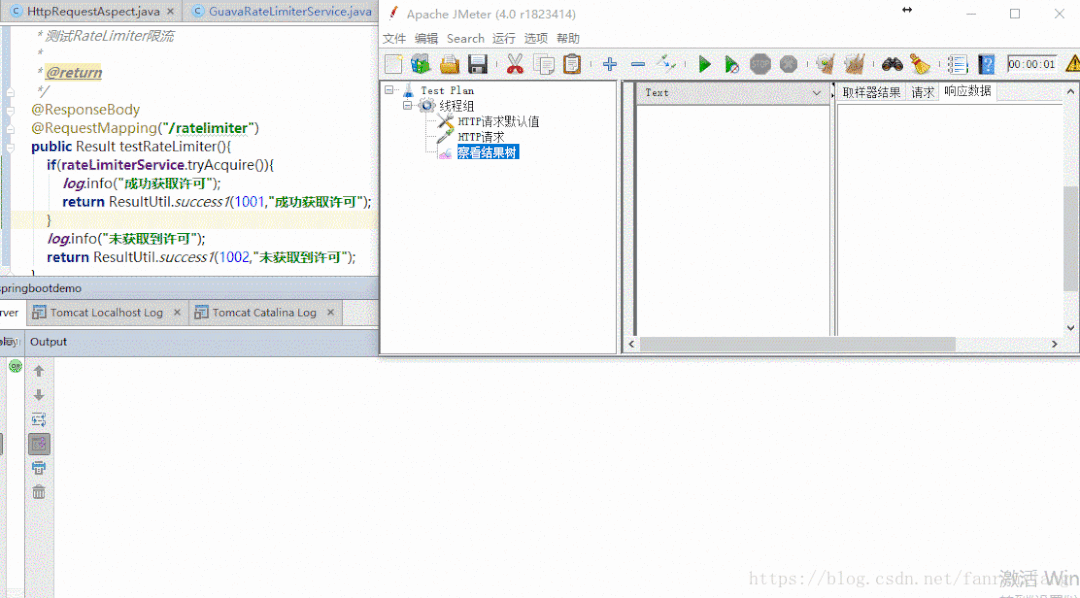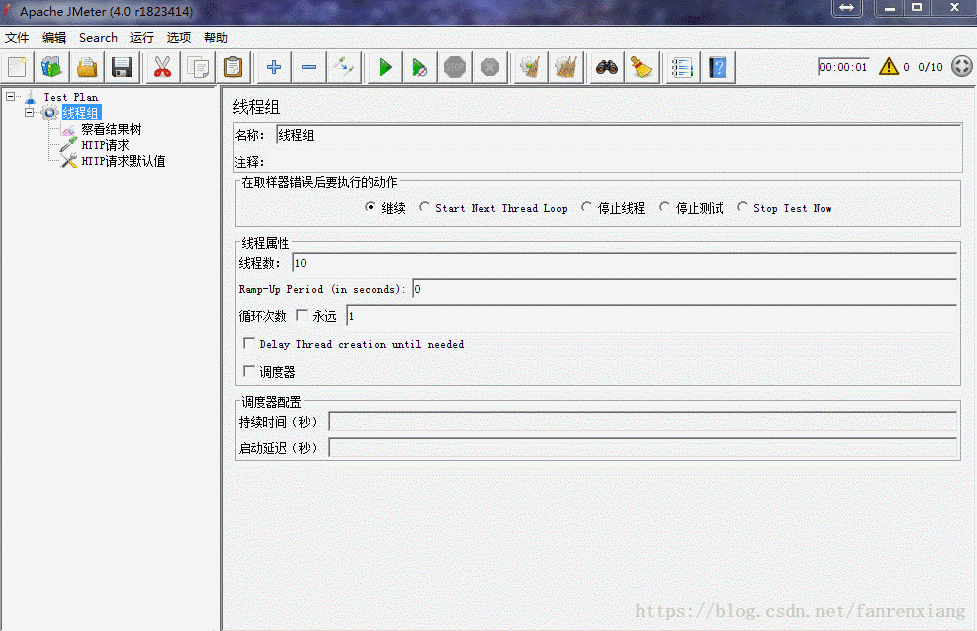Guava RateLimiter 实现 API 限流,这才是正确的姿势!

Guava提供的RateLimiter可以限制物理或逻辑资源的被访问速率,咋一听有点像java并发包下的Samephore,但是又不相同,RateLimiter控制的是速率,Samephore控制的是并发量。
com.google.guava
guava
23.0
public static void main(String[] args) {
String start = new SimpleDateFormat("yyyy-MM-dd HH:mm:ss").format(new Date());
RateLimiter limiter = RateLimiter.create(1.0); // 这里的1表示每秒允许处理的量为1个
for (int i = 1; i <= 10; i++) {
limiter.acquire();// 请求RateLimiter, 超过permits会被阻塞
System.out.println("call execute.." + i);
}
String end = new SimpleDateFormat("yyyy-MM-dd HH:mm:ss").format(new Date());
System.out.println("start time:" + start);
System.out.println("end time:" + end);
}

另外,Java 多线程系列面试题和答案全部整理好了,微信搜索Java技术栈,在后台发送:面试,可以在线阅读。
实际项目中使用
@Service
public class GuavaRateLimiterService {
/*每秒控制5个许可*/
RateLimiter rateLimiter = RateLimiter.create(5.0);
/**
* 获取令牌
*
* @return
*/
public boolean tryAcquire() {
return rateLimiter.tryAcquire();
}
}
@Autowired
private GuavaRateLimiterService rateLimiterService;
@ResponseBody
@RequestMapping("/ratelimiter")
public Result testRateLimiter(){
if(rateLimiterService.tryAcquire()){
return ResultUtil.success1(1001,"成功获取许可");
}
return ResultUtil.success1(1002,"未获取到许可");
}

可以发现,10个并发访问总是只有6个能获取到许可,结论就是能获取到RateLimiter.create(n)中n+1个许可,总体来看Guava的RateLimiter是比较优雅的。本文就是简单的提了下RateLimiter的使用。
翻阅发现使用上述方式使用RateLimiter的方式不够优雅,尽管我们可以把RateLimiter的逻辑包在service里面,controller直接调用即可,但是如果我们换成:自定义注解+切面 的方式实现的话,会优雅的多,详细见下面代码:
import java.lang.annotation.*;
/**
* 自定义注解可以不包含属性,成为一个标识注解
*/
@Inherited
@Documented
@Target({ElementType.METHOD, ElementType.FIELD, ElementType.TYPE})
@Retention(RetentionPolicy.RUNTIME)
public @interface RateLimitAspect {
}
import com.google.common.util.concurrent.RateLimiter;
import com.simons.cn.springbootdemo.util.ResultUtil;
import net.sf.json.JSONObject;
import org.aspectj.lang.ProceedingJoinPoint;
import org.aspectj.lang.annotation.Around;
import org.aspectj.lang.annotation.Aspect;
import org.aspectj.lang.annotation.Pointcut;
import org.springframework.beans.factory.annotation.Autowired;
import org.springframework.context.annotation.Scope;
import org.springframework.stereotype.Component;
import javax.servlet.ServletOutputStream;
import javax.servlet.http.HttpServletResponse;
import java.io.IOException;
@Component
@Scope
@Aspect
public class RateLimitAop {
@Autowired
private HttpServletResponse response;
private RateLimiter rateLimiter = RateLimiter.create(5.0); //比如说,我这里设置"并发数"为5
@Pointcut("@annotation(com.simons.cn.springbootdemo.aspect.RateLimitAspect)")
public void serviceLimit() {
}
@Around("serviceLimit()")
public Object around(ProceedingJoinPoint joinPoint) {
Boolean flag = rateLimiter.tryAcquire();
Object obj = null;
try {
if (flag) {
obj = joinPoint.proceed();
}else{
String result = JSONObject.fromObject(ResultUtil.success1(100, "failure")).toString();
output(response, result);
}
} catch (Throwable e) {
e.printStackTrace();
}
System.out.println("flag=" + flag + ",obj=" + obj);
return obj;
}
public void output(HttpServletResponse response, String msg) throws IOException {
response.setContentType("application/json;charset=UTF-8");
ServletOutputStream outputStream = null;
try {
outputStream = response.getOutputStream();
outputStream.write(msg.getBytes("UTF-8"));
} catch (IOException e) {
e.printStackTrace();
} finally {
outputStream.flush();
outputStream.close();
}
}
}
import com.simons.cn.springbootdemo.aspect.RateLimitAspect;
import com.simons.cn.springbootdemo.util.ResultUtil;
import org.springframework.stereotype.Controller;
import org.springframework.web.bind.annotation.RequestMapping;
import org.springframework.web.bind.annotation.ResponseBody;
/**
* 类描述:RateLimit限流测试(基于 注解+切面 方式)
* 创建人:simonsfan
*/
@Controller
public class TestController {
@ResponseBody
@RateLimitAspect //可以非常方便的通过这个注解来实现限流
@RequestMapping("/test")
public String test(){
return ResultUtil.success1(1001, "success").toString();
}
这样通过自定义注解@RateLimiterAspect来动态的加到需要限流的接口上,个人认为是比较优雅的实现吧。推荐一个 Spring Boot 基础教程及实战示例:https://www.javastack.cn/categories/Spring-Boot/
压测结果:

可以看到,10个线程中无论压测多少次,并发数总是限制在6,也就实现了限流。另外,关注公众号Java技术栈,在后台回复:面试,可以获取我整理的 Java 多线程系列面试题和答案,非常齐全。
作者:饭一碗
来源:https://blog.csdn.net/fanrenxiang/article/details/80949079







关注Java技术栈看更多干货

评论

